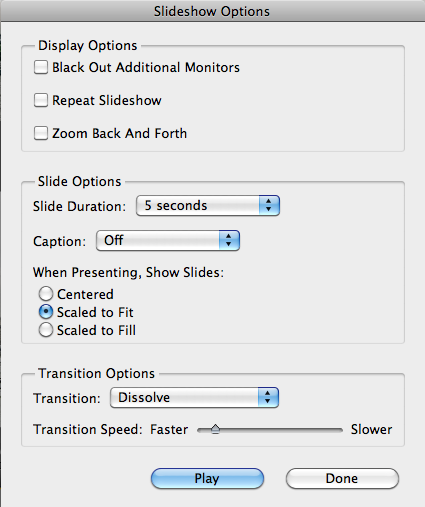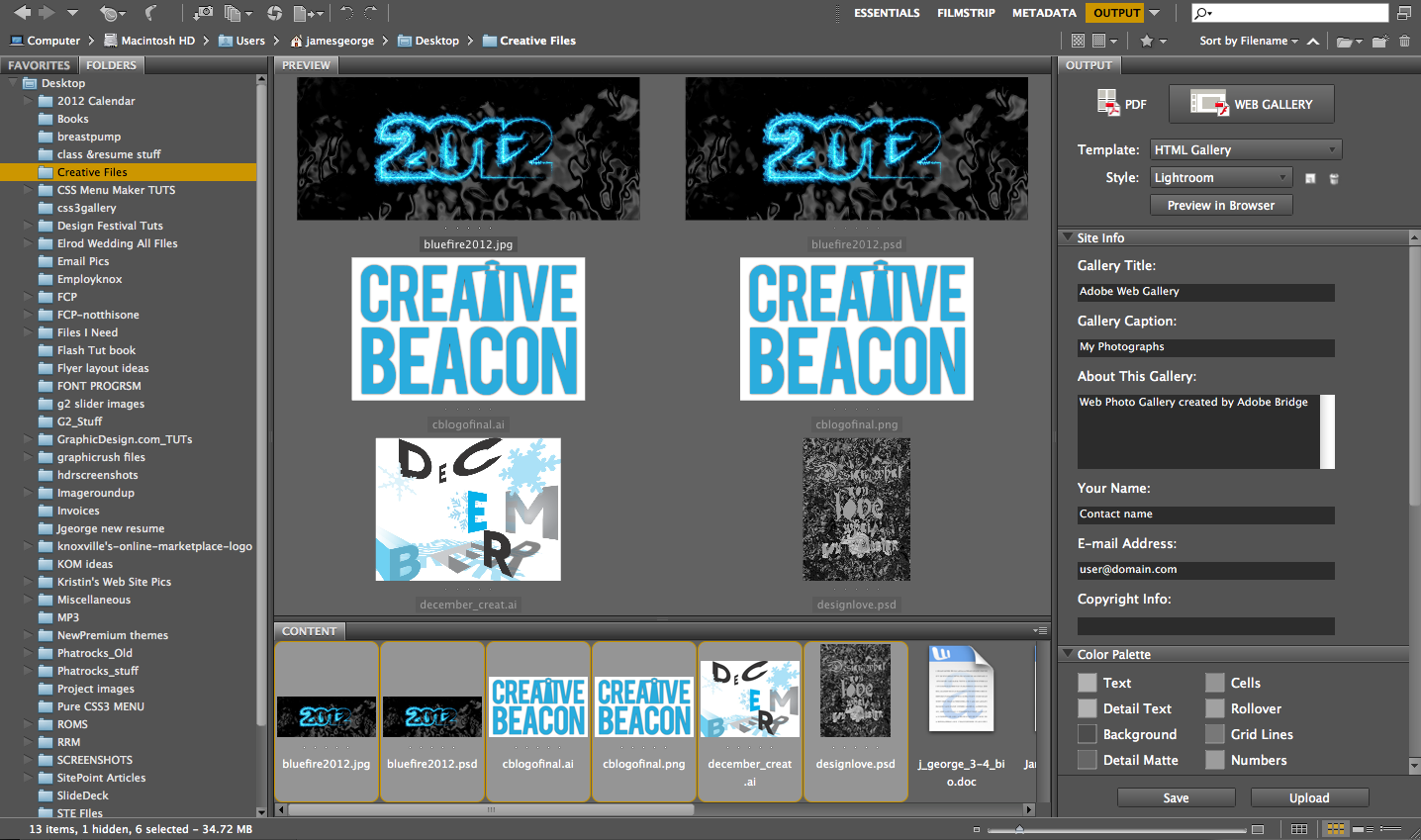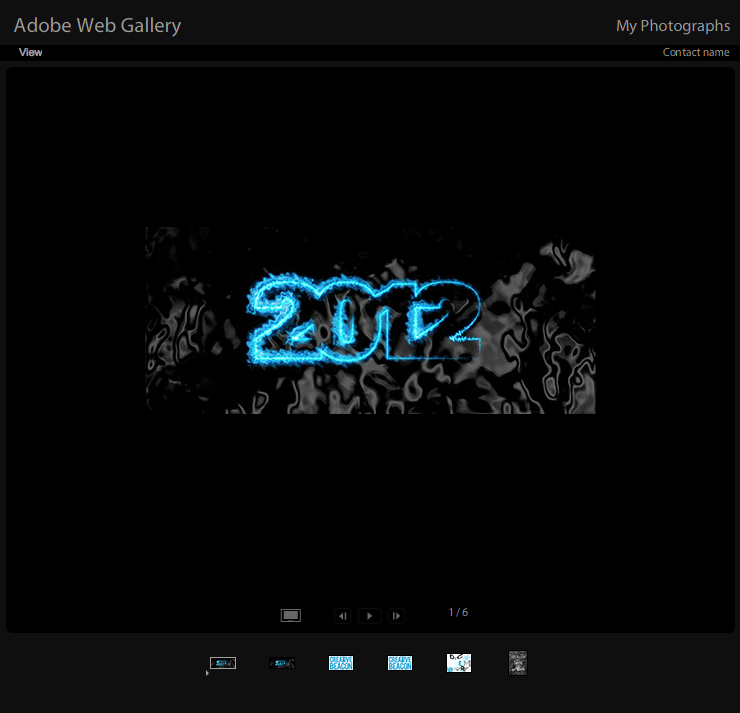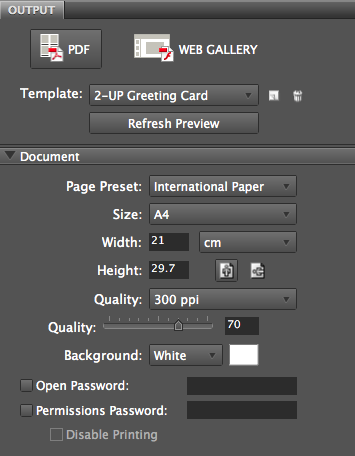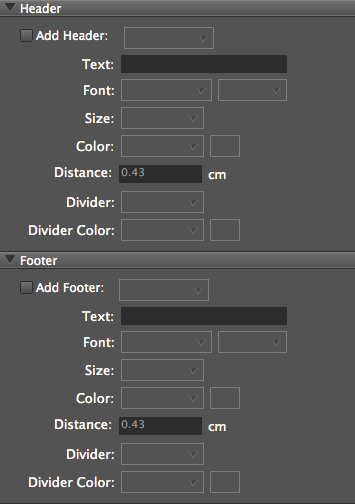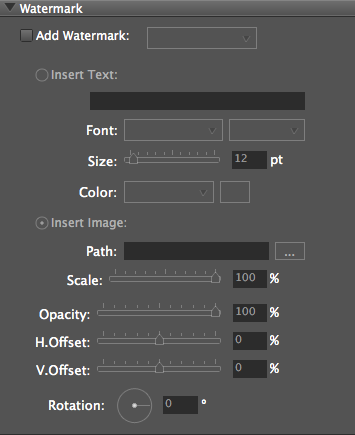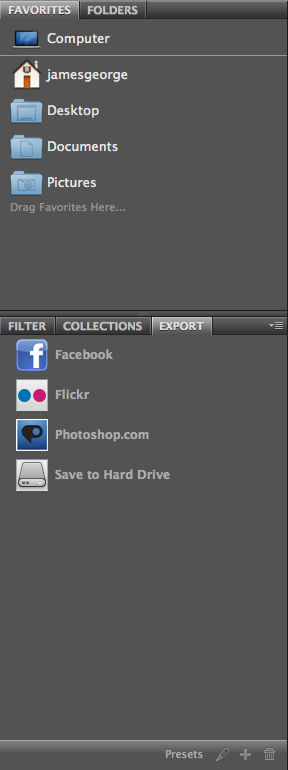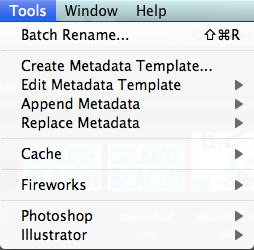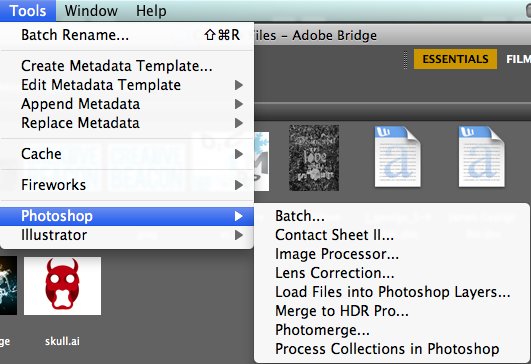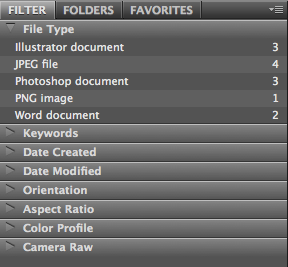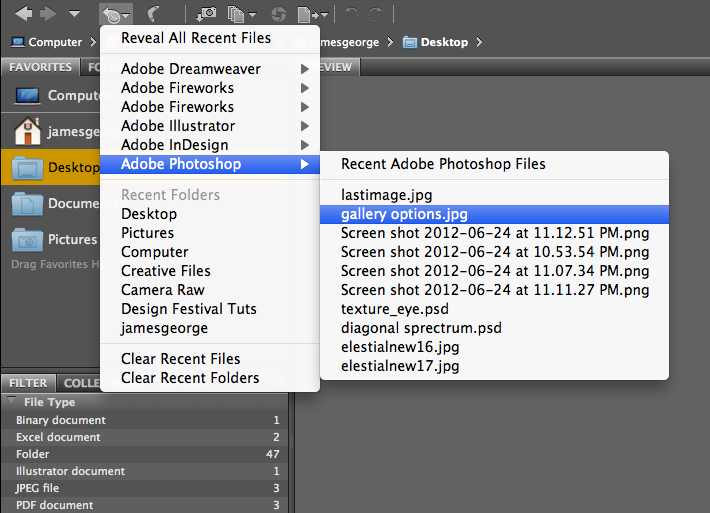7 Ways To Make Adobe Bridge Your Personal Assistant
Key Takeaways
- Adobe Bridge is a versatile file management system that can help organize images, documents, code snippets, project folders, and other media assets, and is especially beneficial for design professionals who accumulate large amounts of files.
- Adobe Bridge allows customization of file viewing through a full-screen slideshow, and provides options for publishing large batches of files quickly using web gallery, making it a useful tool for professionals needing to display or share their work.
- The software offers features to create comprehensive PDF files from image batches, customize the layout, fonts, and colors, and add custom headers, footers, and watermarks, enhancing the presentation of your work.
- Adobe Bridge simplifies the process of exporting to social media and third-party sites, running common batch processes, and finding files easily, making it a convenient tool to streamline your workflow.
Print designers, web designers, web developers, illustrators, and photographers all accumulate massive amounts of files. Adobe makes specialized software for all of these different professions, but they also have a file management system that serves all of these specialties equally well. Despite being one of the most overlooked Adobe applications, Adobe Bridge could easily be their most valuable software, regardless of the specific nature of your work.
Adobe Bridge does a very good job of helping you organize all of your images, documents, code snippets, project folders, and other media assets. But, it does a lot more than just sort your files. Adobe Bridge is packed with features that make it easy to compile files into documents and export your images and assets for professional use. It’s also a great tool for viewing large quantities of files, and prioritizing them to suit your needs.
Tailor Bridge’s slideshow to fit your needs perfectly
Adobe Bridge offers the ability to view your files in a full-screen slideshow, and you can customize the slideshow’s behavior to make browsing your media super organized and ultra efficient. When you need to view files, weed out ones that you don’t need, and choose the best ones to use in a project, you can highlight a group of files/folders and go to “View” > “Slideshow,” or simply hit Command/Ctrl + “L”. You can navigate forward or backwards through your group of files with the left and right arrow keys. To exit, simply hit Esc. Below is an example of how the slideshow will appear on your screen. It shows a large preview of the image, along with the name of the file.
There are numerous ways to customize your slideshow as well. Simply hit Shift + Command/Ctrl + “L” to bring up the options dialog box. Here you can set the duration of each slide, determine the transition between each slide, add captions, and set the speed. From this menu you can play the slide show to check your settings or simply click “Done.”
Publish large batches of files quickly using web gallery
If you want to publish your files for use on the web, you can easily export a group of files into an HTML, Flash, or Airtight gallery. This is great when you want to get your files online quickly and easily. Simply choose “Output” in the top-right and select “Web Gallery.” Being able to create an HTML image gallery of your files and upload them to your site in a matter of minutes is an extremely useful feature for all sorts of professions and purposes.
If you want to customize your gallery, you have a wide variety of options beyond just the type of gallery that you want to create. There are many different options to choose from, and you can customize each gallery with your name, custom colors, custom sizes of the images, and the format of the gallery. This includes the number of rows and columns.
Adobe has made it very convenient; you can export your gallery to a folder, or you can enter your FTP information and upload it directly to the web. Below is an example of a sample HTML gallery created with the default settings.
Assemble comprehensive PDF files from image batches
Another great time-saving feature is the ability to create a PDF file from a group of images. This would be useful if you wanted to send a few photographs or a few different logo ideas to a colleague for review. Simply click the “Output” tab (as you did for the web gallery), but this time, select PDF. A wide variety of options come up in the right column. This will allow you to customize the look and feel of your PDF for your purposes.
You can create contact sheets, 2-up greeting cards, a fine art mat, and even triptychs. This is extremely handy when presenting your images and artwork. This feature will make your work look more professional with very little effort. You can create the document to be any resolution and format that you’d like. The setting are similar to those found in Photoshop, with control over the size, resolution, and background.
There are a lot of ways to completely customize the PDF to your specifications. You can affect the layout, the fonts, and colors, and you can also choose the numbers of columns and rows, as well as the spacing between them. Lastly, you can also include page numbers, which is handy if you have multiple pages, and you need your client to keep them in order.
You can add custom headers and footers (with custom text within each), and you can include dividers in order to customize your layout even further. Adding your company name, branding, or any other pertinent information is very easy, and you only have to set your preferences up once.
If you are a photographer or a designer, you can add a custom watermark to your work in the box below. You can either insert text or you can insert your own image, usually your logo, and can even control attributes such as the size and opacity of your watermark. This helps to ensure that your client can’t simply copy the image, extract it somehow and use it without paying you.
Export to social media and third-party sites
If you click the “Essentials” tab, you will see different options on the left side of the screen. One of those options is “Export.” Here, you can export your images directly to places such as Facebook, Flickr, or even a backup hard drive by simply dragging your files to any of these icons. You will only need your login information, and you can post the images to Flickr and Facebook quickly and easily.
Run common batch processes
Automatic batch processing is really handy, and it can save you a lot of time. Instead of having to flip through multiple programs, you can run a batch or process multiple files directly in Adobe Bridge. Simply highlight the files or folder that you want to process and go to “Tools,” then select either Fireworks, Photoshop, or Illustrator. Most of the batch processes within Photoshop can be found in Bridge.
For example, if you choose Photoshop, you can select Photomerge, or you can run a batch of any of the actions found in Photoshop. This is handy, because you can process a near-infinite amount of images without ever leaving Bridge.
Find files easily
Organization is great, but if you are like me, I am sure you have been in a situation where you are crunched for time, and you’ve accidentally saved your file in the wrong place, only to come back later not knowing where you placed it. Bridge has excellent searching and filtering ability, so if you know what type of file you are looking for, you can weed out the files types that don’t apply. For example, if you knew that you were looking for a PSD file, you could filter your search to only include Photoshop documents. This is a huge time saver when looking for files.
Find the most recently opened files from your Adobe products
Adobe Bridge will allow you to view the most recent files for all of your Adobe products in one convenient menu. It also shows you the most recent folders. This is a quick way to find a recent file, especially if you have misplaced it in a hurry. You don’t have to remember the filepath for your latest work; Bridge remembers for you.
Conclusion
Adobe Bridge is a handy file management system for all of your files, whether they are images, Photoshop documents, PDFs, Illustrator files, or anything else. Bridge is packed with features, such as having the ability to rank files, sort them, and organize them, but it goes much further than that. You can export your images for the web, compile PDF documents, and find misplaced files in a matter of seconds, adding more appeal and utility to an already fantastic tool for organizing your files.
How much time do you spend in Adobe Bridge? Do you favor your future self by keeping your files impeccably organized, or does Adobe Bridge just sit quietly on your desktop?
Frequently Asked Questions about Adobe Bridge
What are the key features of Adobe Bridge?
Adobe Bridge is a powerful creative asset manager that lets you preview, organize, edit, and publish multiple creative assets quickly and easily. It offers a flexible workspace that can be customized to suit your needs. Key features include batch editing, advanced search, metadata editing, and the ability to integrate with other Adobe applications like Photoshop and InDesign. It also supports various file formats, including PSD, AI, PDF, and many more.
How does Adobe Bridge differ from other Adobe applications?
Unlike other Adobe applications that focus on specific tasks, Adobe Bridge serves as a hub for managing and organizing all your creative assets. It’s a versatile tool that can be used in conjunction with other Adobe applications, allowing you to streamline your workflow and increase productivity.
Can I use Adobe Bridge for batch editing?
Yes, Adobe Bridge allows you to perform batch editing, which can save you a significant amount of time. You can rename multiple files, apply metadata, keywords, ratings, and labels to a group of selected items, and even run Photoshop actions on a batch of images.
How can I customize my workspace in Adobe Bridge?
Adobe Bridge offers a customizable workspace. You can choose from several preset workspaces or create your own by arranging panels and dialog boxes to suit your workflow. You can also save your workspace layout for future use.
What is the role of metadata in Adobe Bridge?
Metadata plays a crucial role in Adobe Bridge. It provides detailed information about a file, including the file name, format, size, creation date, and more. You can edit and search metadata, making it easier to manage and locate your files.
How does Adobe Bridge integrate with other Adobe applications?
Adobe Bridge is designed to integrate seamlessly with other Adobe applications. You can directly open files in applications like Photoshop or InDesign from Bridge. It also allows you to import photos from your camera directly into Adobe Lightroom.
Can I preview files in Adobe Bridge?
Yes, Adobe Bridge has a built-in Preview panel that allows you to view your files without opening them in a separate application. You can preview images, videos, and even audio files.
What file formats does Adobe Bridge support?
Adobe Bridge supports a wide range of file formats, including but not limited to PSD, AI, INDD, JPEG, PDF, GIF, PNG, TIFF, and RAW. It also supports video and audio formats.
How can I use Adobe Bridge to improve my workflow?
Adobe Bridge can significantly improve your workflow by providing a centralized location for all your creative assets. You can organize, preview, and edit your files, apply metadata, perform batch edits, and integrate with other Adobe applications, all from within Bridge.
Is Adobe Bridge available for free?
Adobe Bridge is included as part of your Adobe Creative Cloud subscription. However, it can also be downloaded and used for free, although some features may be limited.
James George is a professional web developer and graphic designer. James is an expert in design, and a professional web developer, with a special interest in WordPress. Founder of Design Crawl, James has been a professional designer since 2005.

